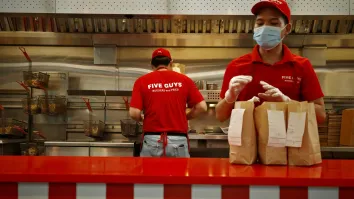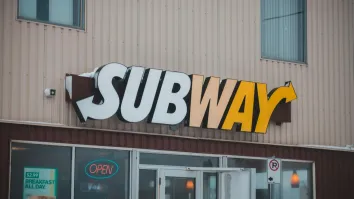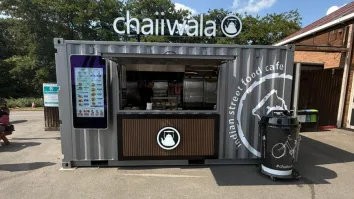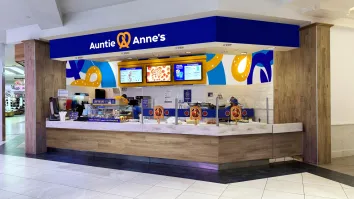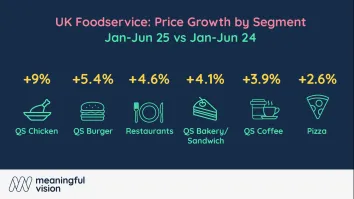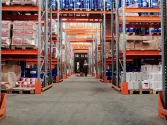
10 tips from the retail sector for restaurant operators to leverage sales
The retail sector has traditionally been an early adopter of new consumer-facing technology, typically turning to technology to maximise efficiencies and to augment the customer experience to deliver increased turnover. Now, several key advances are overlapping into the restaurant arena, giving operators the opportunity to take advantage of the latest advancements in sales and stock management.
Here are 10 key learnings from the retail sector, according to Kevin Greene of the International Product Manager, CBE Software.
1. Speed it up
Every year, British retailers lose £1.4 billion thanks to busy checkouts. Put simply – customers just can’t be bothered to wait and the sale is lost. In the restaurant space, operators should be utilising a modern, integrated EPoS system, which easily copes with peak demand by merging the card payment systems with the tills. This means front-of-house don’t need to switch processes to handle transactions, therefore speeding up service and increasing customer satisfaction.
2. Self-service satisfaction
Love them or hate them – self-service tills are widespread across retail. Why? Because they reduce wait times and increase turnover. Quick service restaurants looking to increase customer churn and revenue are missing a valuable trick by not adopting the latest technology, which allows customers to use self-service kiosks or tablet-based ordering systems to place and pay for orders.
3. Pricing perfection
By adopting an integrated EPoS system, restaurant operators can manage price and margins more effectively. Prices can be easily changed according to the time of day – so perhaps across lunchtime and evening menus. An integrated EPoS system ensures operators only need to enter a dish into the system once for it to integrate with the EPoS’ automatic price branding, resulting in dish items correctly costed during specified time periods, to maximise margins.
4. Command central
By using integrated technology, multi-site operators can have complete control of pricing and margin management from one central, head office location. Trying to control prices according to location can be cumbersome and hugely time-consuming, so the ability to implement changes quickly and effortlessly from one setting across the estate is certainly liberating – especially when doing so on a site-by-site basis.
5. Marketing masterstroke
Consider the millions of offers run by a supermarket on a daily basis. They’re turning to savvy, integrated technology to increase impulse purchases with intelligent promotions that react on the spot, but won’t cannibalise other product sales. With Christmas just around the corner, restaurant operators can introduce an instant offer on a festive turkey roast, without a negative effect on other roast items.
6. Real-time reporting
EPoS systems are capable of generating real-time reports for high-level KPIs, giving management the right information at the right time – anywhere in the world. A manager can be abroad on business and still make key decisions on issues arising back home. For restaurant operators, a smart EPoS system can generate instant performance reports based on individual sites and across the estate, as often as necessary.
7. Stock control
Stock management is absolutely critical. Around 70% of all shrinkage for restaurant operators is down to poor stock management practices or direct pilferage. Managing stock via an EPoS system is invaluable, providing general remote oversight and also crucial direct control over stock levels. This kind of check is vital for multi-site operations where management simply cannot practically oversee all locations at the same time.
8. Integrating loyalty
Integrated EPoS pays huge dividends in automation and integration. Loyalty schemes can be integrated into a single visit to the cashier – so for example, handling the loyalty element of the transaction doesn’t need to be a separate process. And, as part of a loyalty programme, imagine instantly being able to inform customers via an in-app message on their phone that their favourite wine is currently on offer. It’s this level of personalisation which drives crucial footfall for an operator.
9. Softly, softly, sales promotion
It’s not all about the headline discounts. An integrated system means operators can control customer messaging when dining in-house. Display screens linked to the EPoS system can be updated to inform diners about the provenance of ingredients or the way their favourite spirit is distilled. Sometimes it really isn’t about the hard sell, but a subtle and steady flow of information that draws customers in, whilst delivering a memorable experience.
10. Remain relevant
Consumers who use the latest technologies within a retail environment are the very same consumers who want to see similar advances within the restaurant sector. Customers want and indeed expect to be provided with technology to improve not only their shopping experience, but also their drinking and dining experiences. In such a competitive marketplace, operators need to keep abreast and implement new developments to drive the customer experience and further enhance the bottom line.



